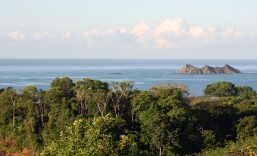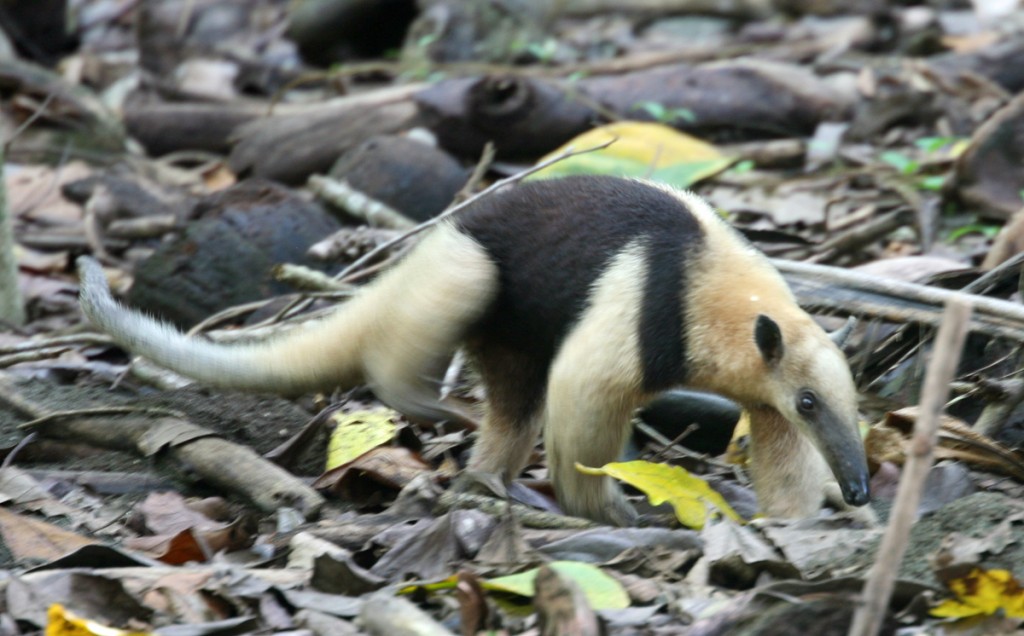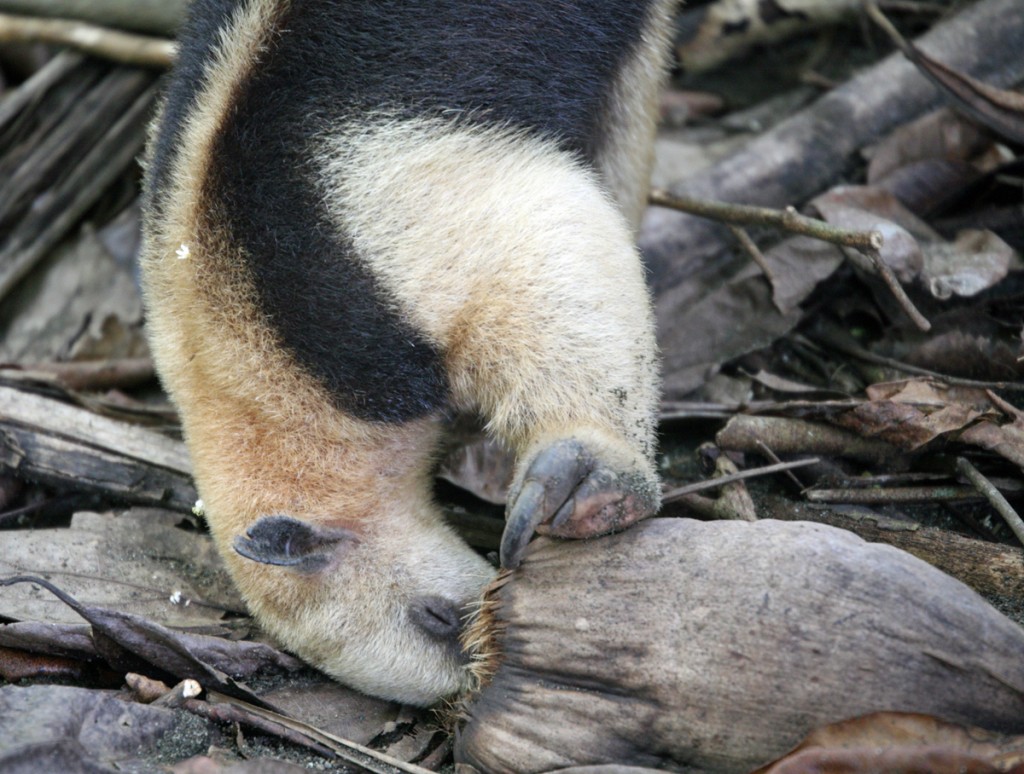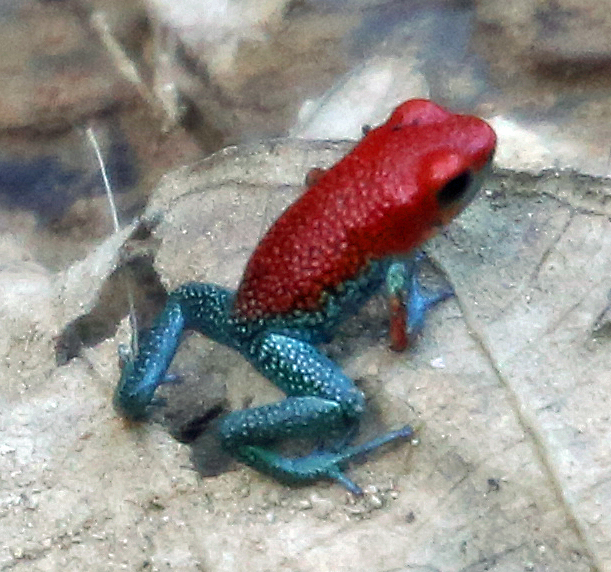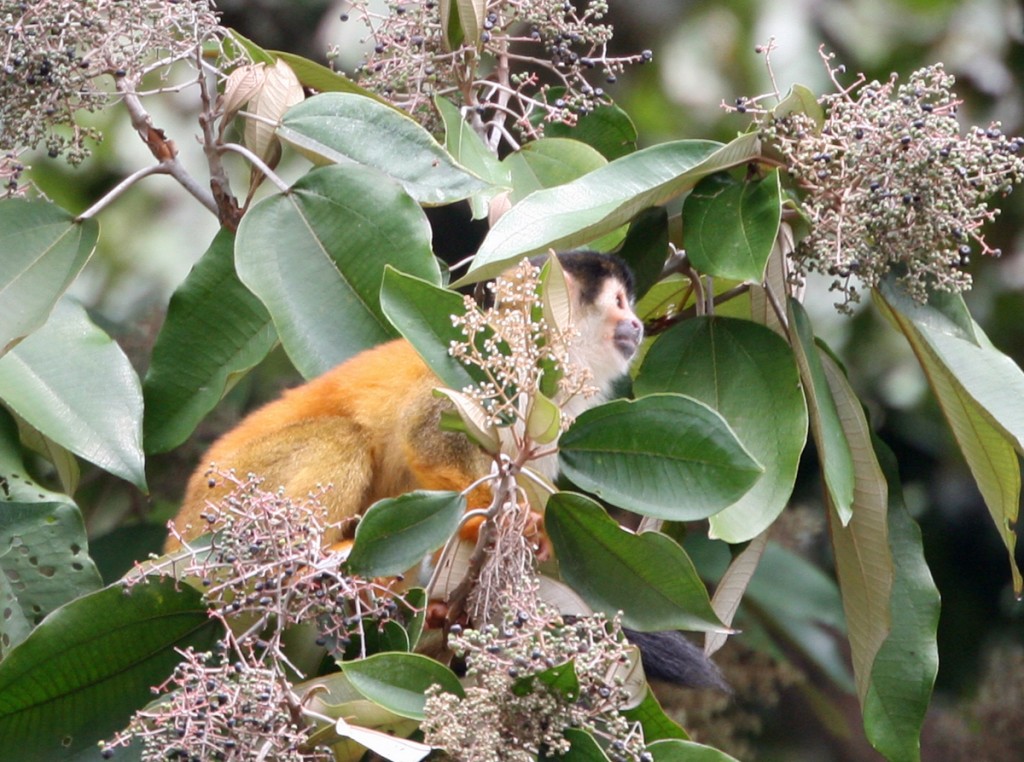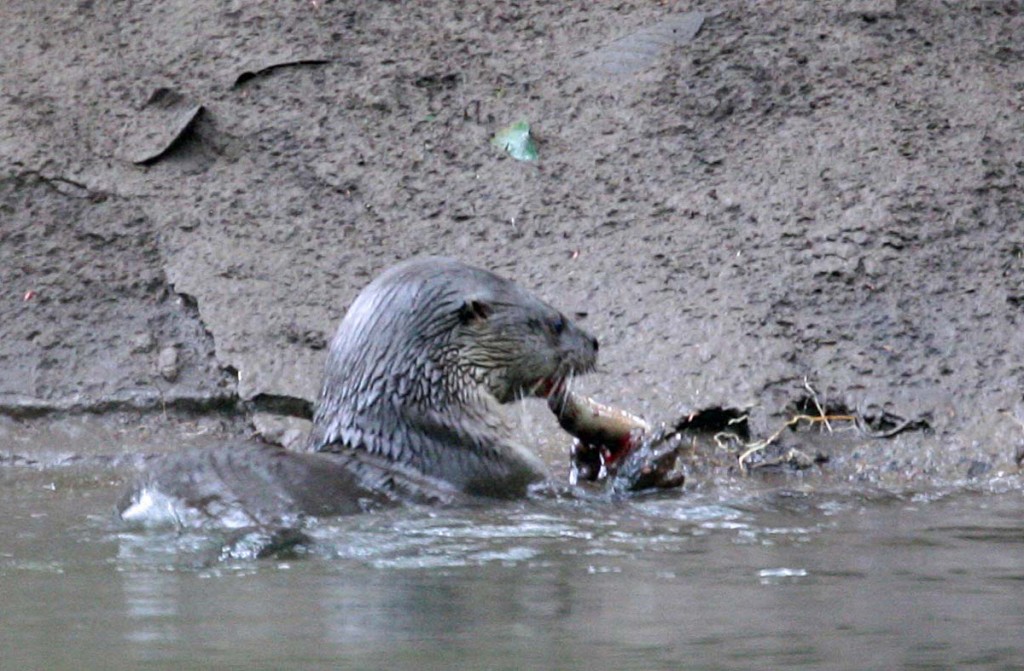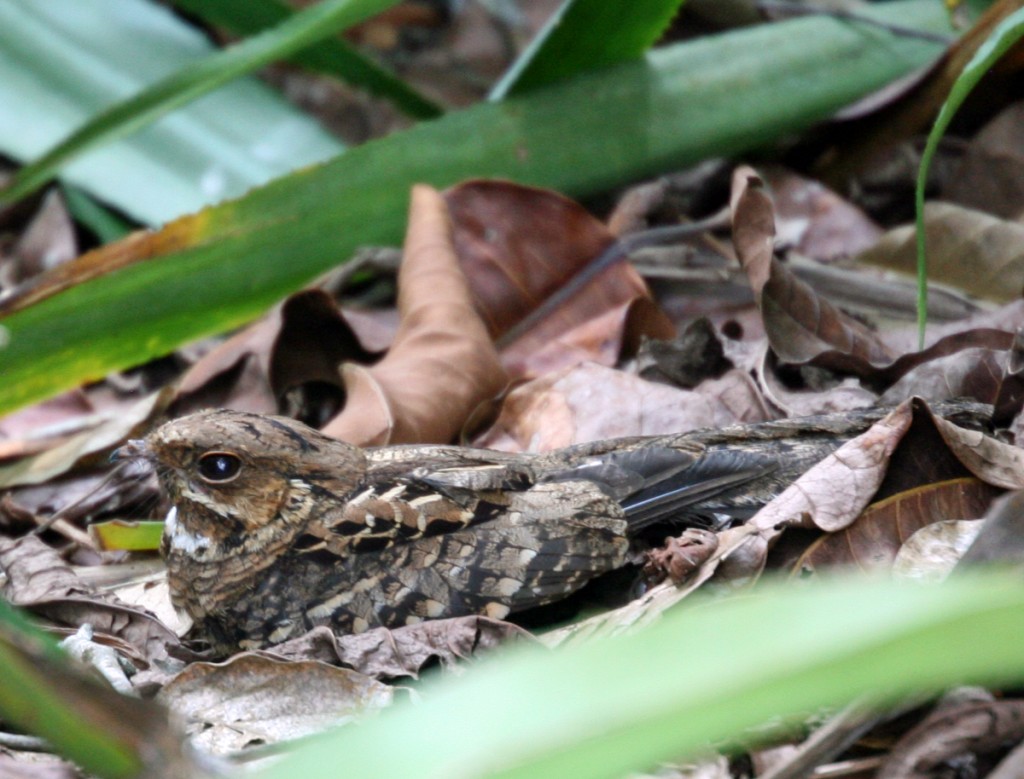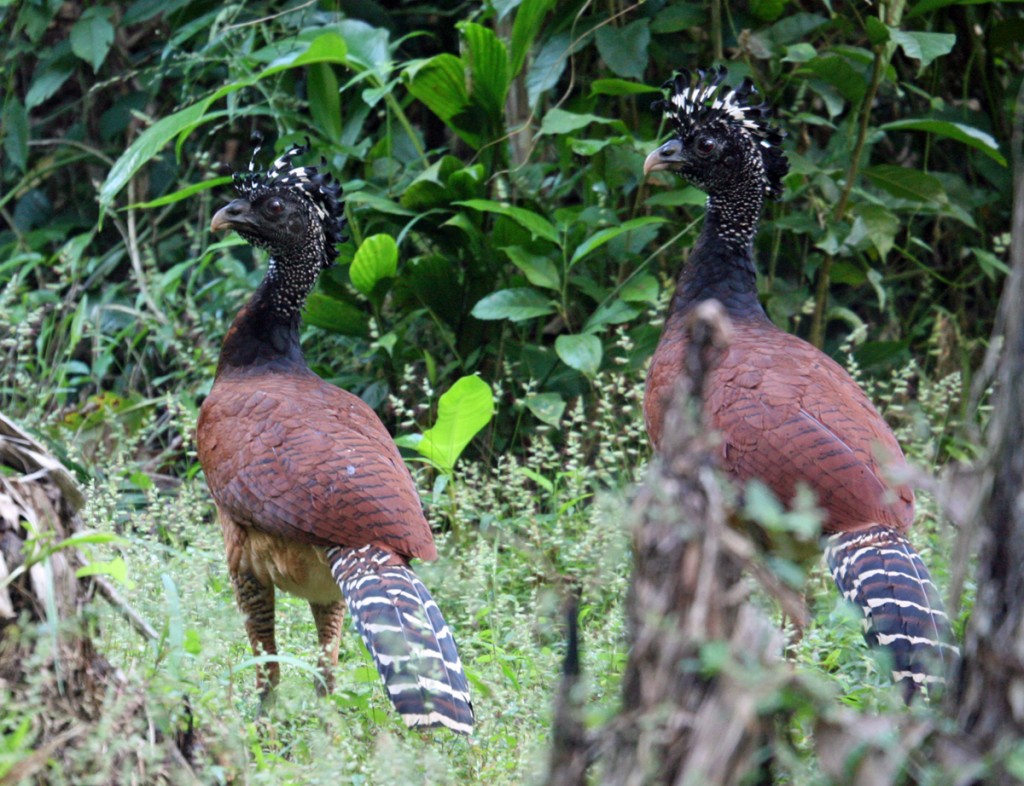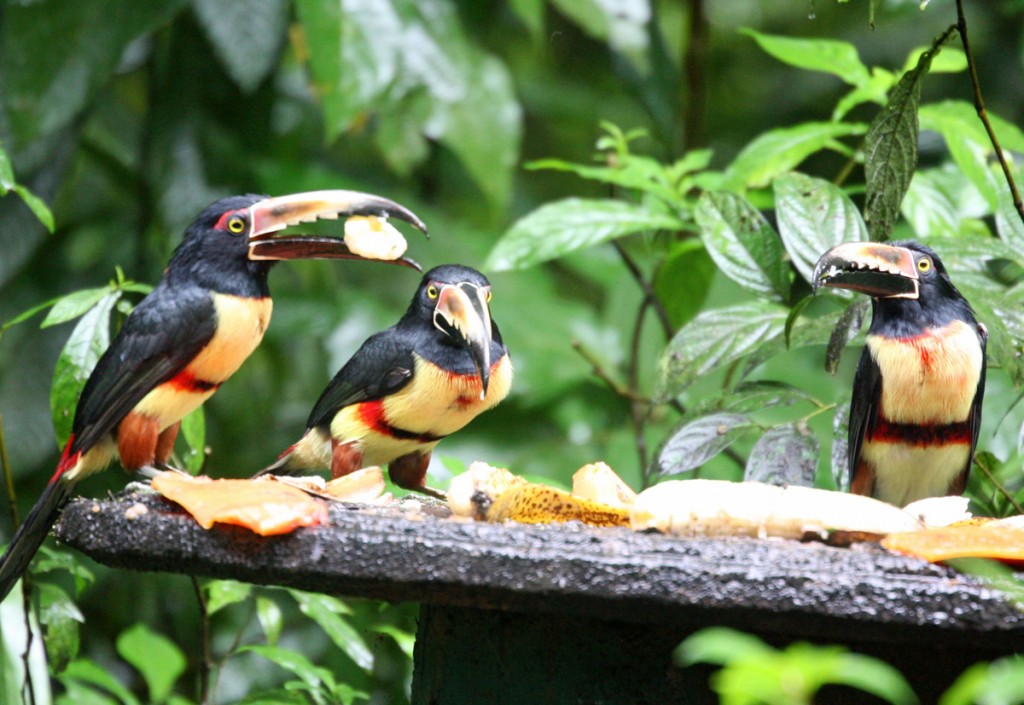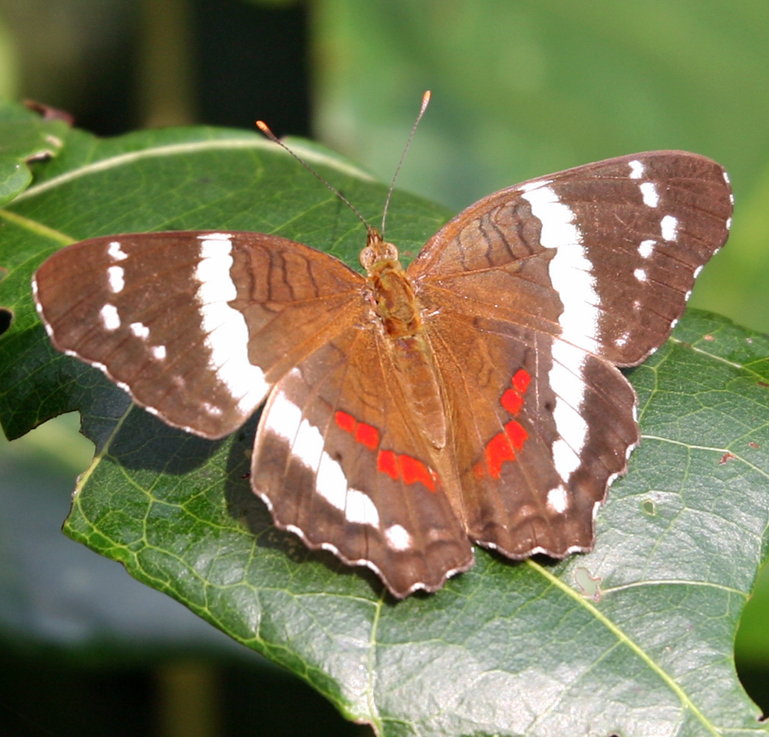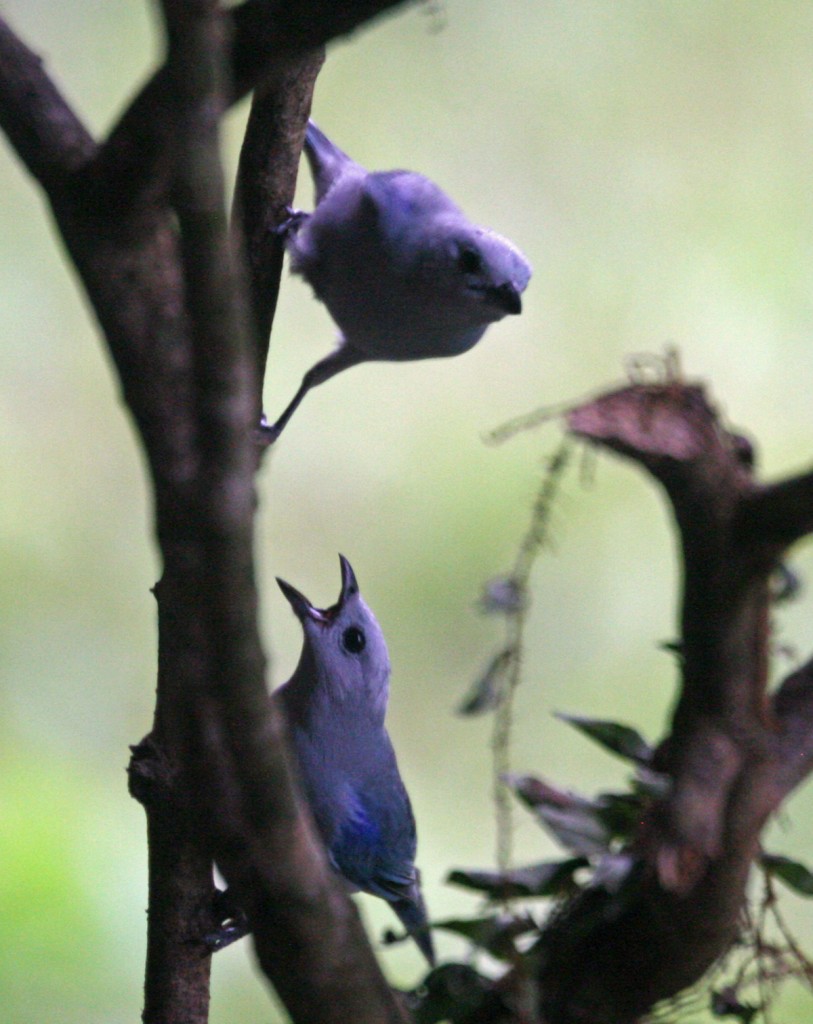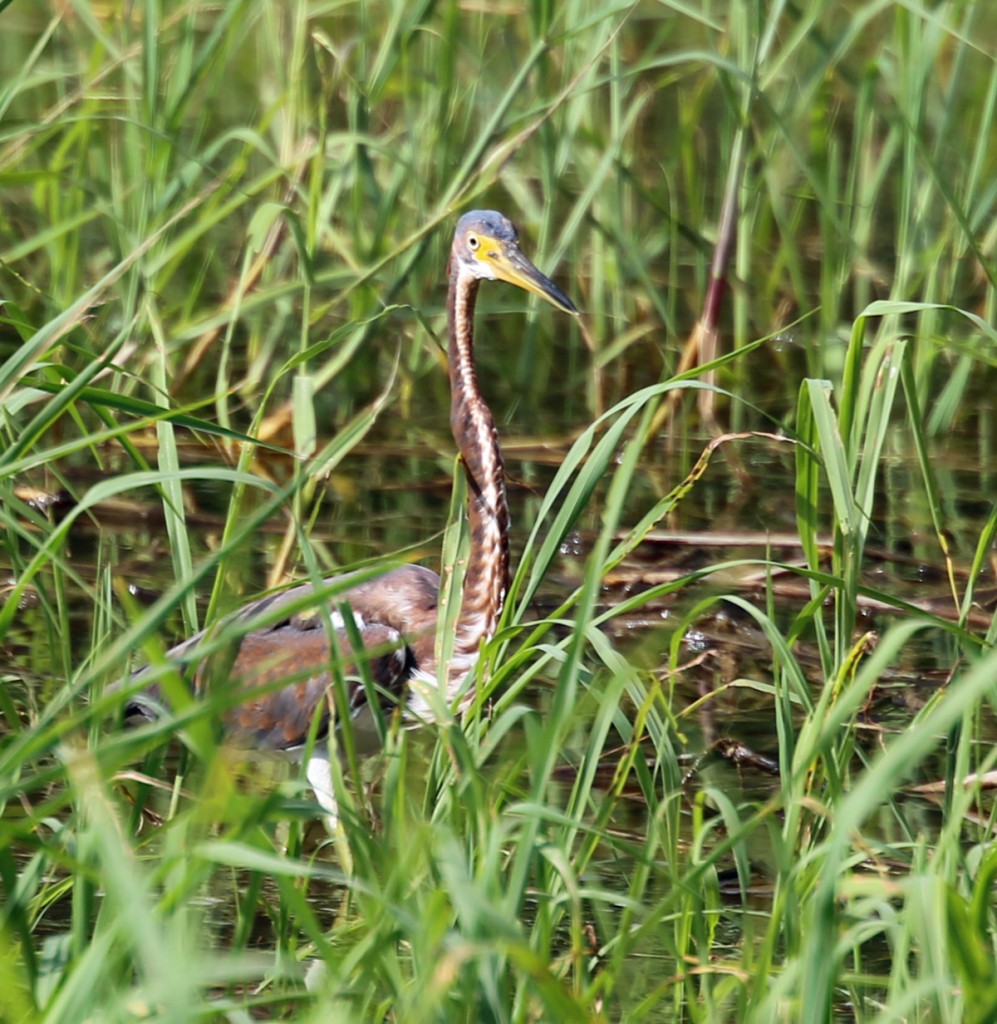On the prowl in search of ants and termites, a furry Northern Tamandua (Tamandua mexicana) uses its long snout to explore what appears to be the dried husk of a large coconut (below). These photographs of the anteater were taken on a hike from Serena to Carate in 2010, not far from the beach that lines the Pacific shore of the Corcovado National Park. Northern Tamanduas consume an average of 9,000 insects each day.
All media is copyright costaricawildlife.net, 2013.
